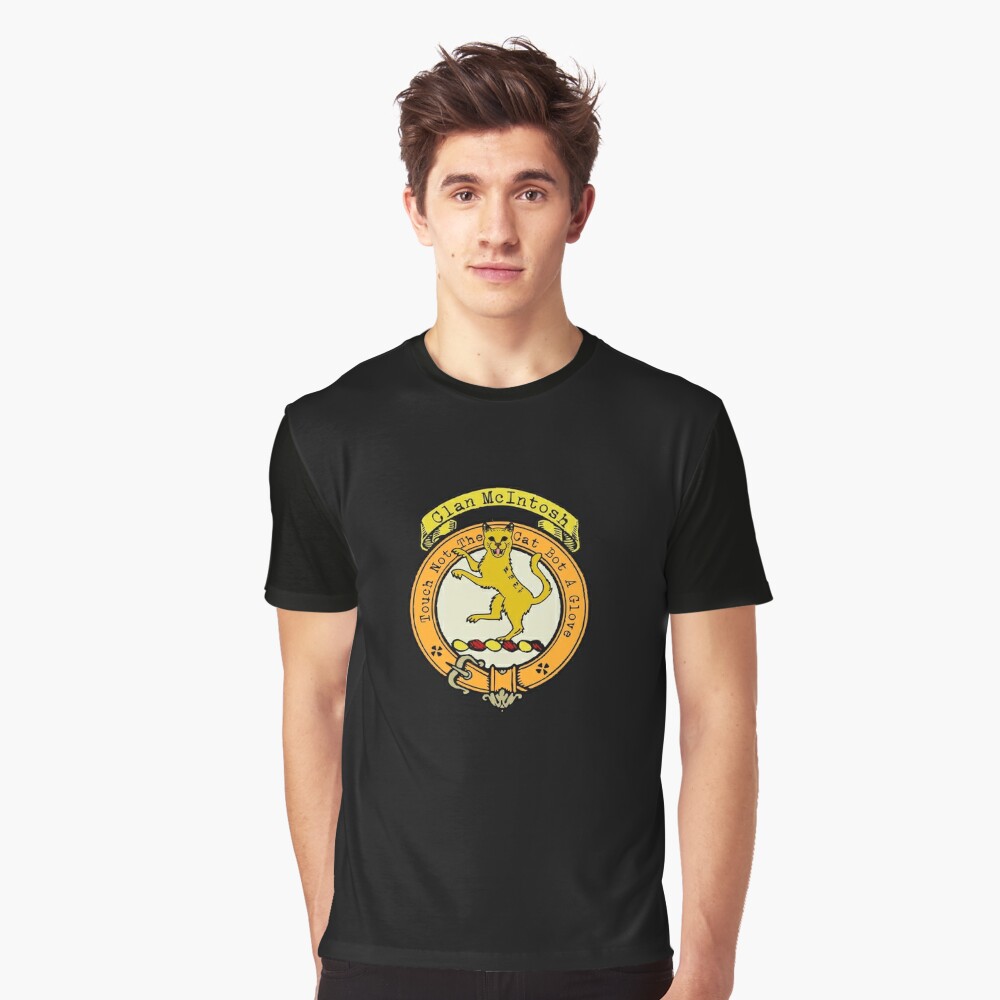Clan McIntosh Crest
|
|
CREST: a cat-a-mountain salient guardant Proper MOTTO: Touch not the cat bot a glove TRANSLATION: N/A VARIATIONS: MacKintosh, MacIntosh |
| The origins of Clan McIntosh can be traced back to the early medieval period. The word ‘toisech’ meaning ‘leader,’ reflects the clan’s prominent role as chiefs, captains, and leaders within the Scottish society. According to Mackintosh senachies, the clan’s first chief was Shaw, the second son of Duncan Macduff, Earl of Fife, belonging to the royal house of Dalriada.Shaw Macduff’s appointment as the constable of Inverness Castle in the mid-12th century marked the beginning of Mcintosh’s influence. His son, Shaw, succeeded him as the second chief in 1179, and the family’s power was further solidified by William the Lion, who confirmed Shaw’s inheritance.
Throughout the centuries, McIntosh chiefs faced challenges and engaged in feuds that shaped their legacy. The fifth chief, Ferquhar, displayed valor by leading the clan against the army of King Haakon of Norway at the Battle of Largs in 1263. However, he tragically fell in a duel two years later, leaving his infant son, Angus, as the heir to the clan. |
|
 |
|
| Purchase @ Redbubble Purchase @ Amazon.com Purchase @ Amazon.co.uk |
|
| Angus’s upbringing under the care of his uncle, Alexander of Islay, the Lord of the Isles, influenced his path. In 1291, Angus married Eva, the daughter of Dougal Dal, chief of Clan Chattan, which further integrated Clan Mcintosh into the wider Scottish clans.The marriage brought significant territorial expansion, with Eva bringing the lands of Glenloy and Loch Arkaig into the Macintosh fold. Angus and Eva established their residence at Tor castle before eventually relocating to Rothiemurchus, solidifying their role as leaders within Clan Chattan—a confederation of independent clans. Clan Macintosh and Scottish History: Clan Macintosh remained actively involved in pivotal moments of Scottish history. The sixth chief supported Robert the Bruce during the War of Independence, displaying unwavering loyalty to the Scottish cause.
Feuds and conflicts characterized the clan’s history, especially with the Comyns. In 1424, the Comyns forcibly seized Macintosh lands, igniting a long-standing feud. A dramatic turn of events unfolded during a feast of reconciliation at the Comyn’s castle, where Macintosh forewarned of treachery, turned the tables on their hosts, resulting in a slaughter that shifted the balance of power in their favor. In more recent history, Clan Mcintosh rallied behind the Stuart cause. During the Jacobite uprisings, they fought under Montrose’s banner, remained loyal in 1715, and actively participated in the Rising of 1745. The clan suffered heavy losses at the Battle of Culloden, marking a turning point in their journey. In the aftermath of Culloden, the clan faced challenging times, but the title and leadership of Clan Chattan and Clan Mcintosh endured. The passing of the twenty-eighth chief in 1938 saw the title transferred to Vice Admiral Lachlan Mackintosh of Mackintosh. A decision by the Lyon Court in 1942 eventually led to Mckintosh of Torcastle assuming leadership of Clan Chattan. |
|
Citations:
|
|

